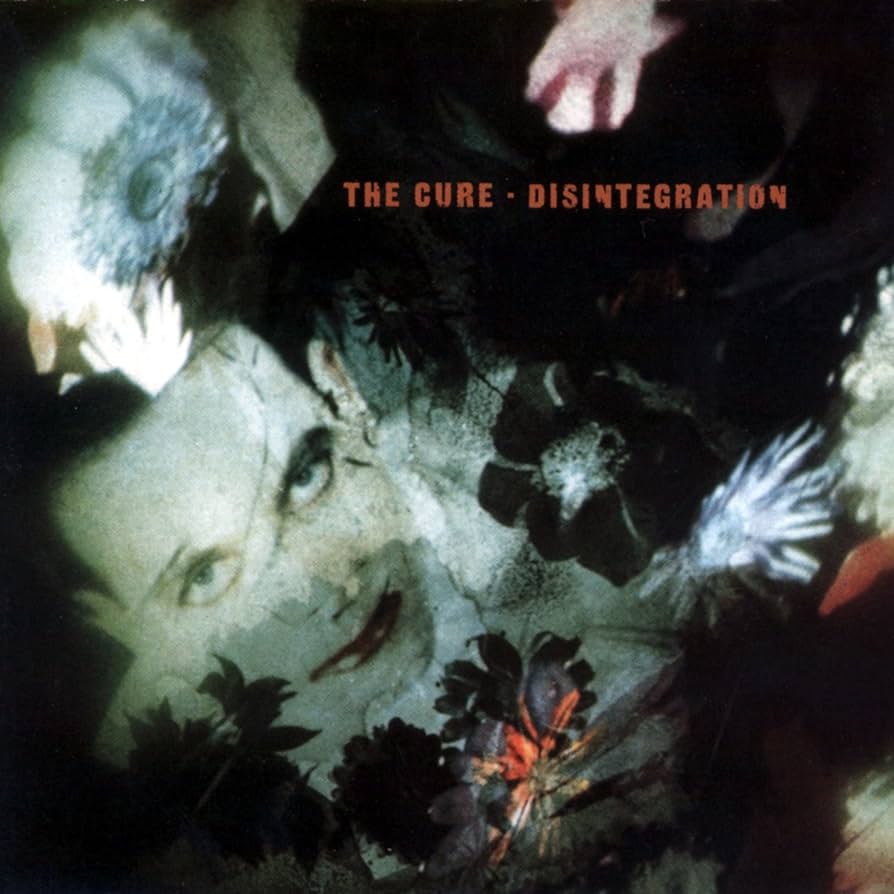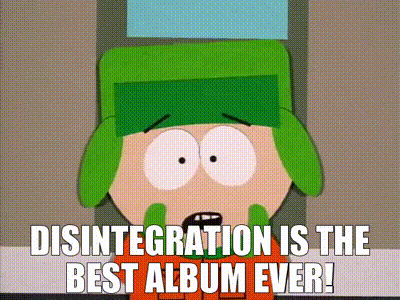On May 2nd 1989, The Cure released Disintegration, their eighth studio album – intended as an obituary for the band, it instead exceeded expectations as their most successful album to date. It was a massive departure from 1987’s Kiss Me, Kiss Me, Kiss Me – discarding the ebullient exploration of riotious pop for a brooding, introspective creation awash with murmured vocals and sprawling echoing guitars. The ever-evolving band had returned to the gloomier sounds of Pornography from 1982, and indeed Disintegration would come to be seen as the second instalment in the Cure’s ‘dark trilogy’ of albums that would conclude with Bloodflowers in 2000.
It’s easy to see why the darker sound had returned – Robert Smith has been open about his maudlin trepidation approaching his thirtieth birthday (ah, the foibles of the young!) and anxiety about his legacy as a musician. Despite the preceding album being a great international hit and their first significant placement in the influential US Billboard Top 40, it lacked the emotional signifance Smith seemed to crave, and he set about creating Disintegration with what seemed like a feverish anxiety.
Surrounding circumstances also put the pressure on the creative process. Founder, former drummer and current keyboardist Lol Tolhurst was falling apart through alcoholism, creating friction through the band. Simultaneously, Smith was unapproachable and withdrawn, fleeing his unsought stardom, and rumours even swirled that the album emerged fully-formed from a tyrannical position as band leader – although these have been stridently denied.
What is inescapable is the intent to channel that anxiety and despondency into the music, which created some of The Cure’s most enduring, heartfelt and soulwrenching songs. The sparse sadness of album opener “Plainsong” or the watery grave of “The Same Deep Water As You” yank on the heartstrings and linger in the memory. “Prayers for Rain” is one of my favourite songs by The Cure, and could be aimed at any of Smith’s tormentors, including himself.
You fracture me, your hands on me
A touch so plain, so stale it kills
You strangle me, entangle me
In hopelessness and prayers for rain
Then, of course, were the striking contrasts. The hearfelt “Pictures of You” is a winsome love song that could be emblematic for all of The Cure’s romance. But it’s “Lovesong” that is the truest expression of love, his “most open show of emotion” in Smith’s own words. Well it should be, as it was a wedding gift to Mary Poole when she and Smith were married in August 1988 – almost exactly a year to the day “Lovesong” was released as a single. Finally, “Lullaby” resounds as one of the most iconic songs by The Cure ever released – a perfect mishmash of nightmare and jollity, a catchy pop song shrouded by some half-slumbering specter. It rightfully won the 1989 Brit Award for Best Music Video.
Yet such gems were initially obscured by the chaotic miasma of the album’s recording. The sessions with Lol Tolhurst came to a violet conclusion – tensions spilled over when the keyboardist was at the final mixing session, drunk, and slated the entire album. He stormed out, and by the end of the year Smith had written to release the co-founder from The Cure. Not long after in very early April ’89, The Cure had the inevitable collision with their record company, Elektra. Convinced further success lay in the pop-tinged direction set by “Kiss Me Kiss Me Kiss Me”, the corporate executives were left aghast by the advance listening party. The words “commercial suicide” and “wilfully obscure” arose in wails from the boardroom – and Smith no doubt cherishes that feedback to this day, now that Disintegration is still their most commercially successful album.
Out of such turbulent crucibles can come such gold. Disintegration had David M. Allen onboard for production, renowned producer to many contemporaries including (but not limited to) The Psychedelic Furs, The Chameleons and The Sisters of Mercy for their debut album in 1985. It’s easy to draw parallels of fraught recording and production sessions, fuelled by chemistry and booze, wearing thin on the tempers of fractious creatives. Yet out of such suffering came sweet relief; Disintegration was hailed by the critics as paramount work. Rolling Stone’s review not long after release played it coy, but hailed it as “what The Cure do best” and that Smith had “unequivocally, utterly and completely right”. More than ten years later, Pitchfork described it as simply “their crowning achievement“. Even more unlikely kudos would come, with a cameo in legendary adult animation “South Park” celebrating the album, and finally achieving a truly modern relevance by appearing in a Marvel movie as recently as 2015.
Pop culture aside, Disintegration is routinely hailed as a landmark work, occupying an unassailable position on ‘Best Of…’ lists throughout the media. Just as significant was its impact on other musicians, many of them in similar genres, who point to The Cure, and this album specifically, as crucially influential.
For the goth scene itself, heading into the Nineties and dropping out of mainstream awareness, it would be a lifeline of potent creativty – the band wouldn’t revisit this territory until 2000 and Bloodflowers, which would not occupy such dizzy heights even though it continued the legacy, once set by Pornography and raised to an eternal high with the release of Disintegration, on this day in 1989.


